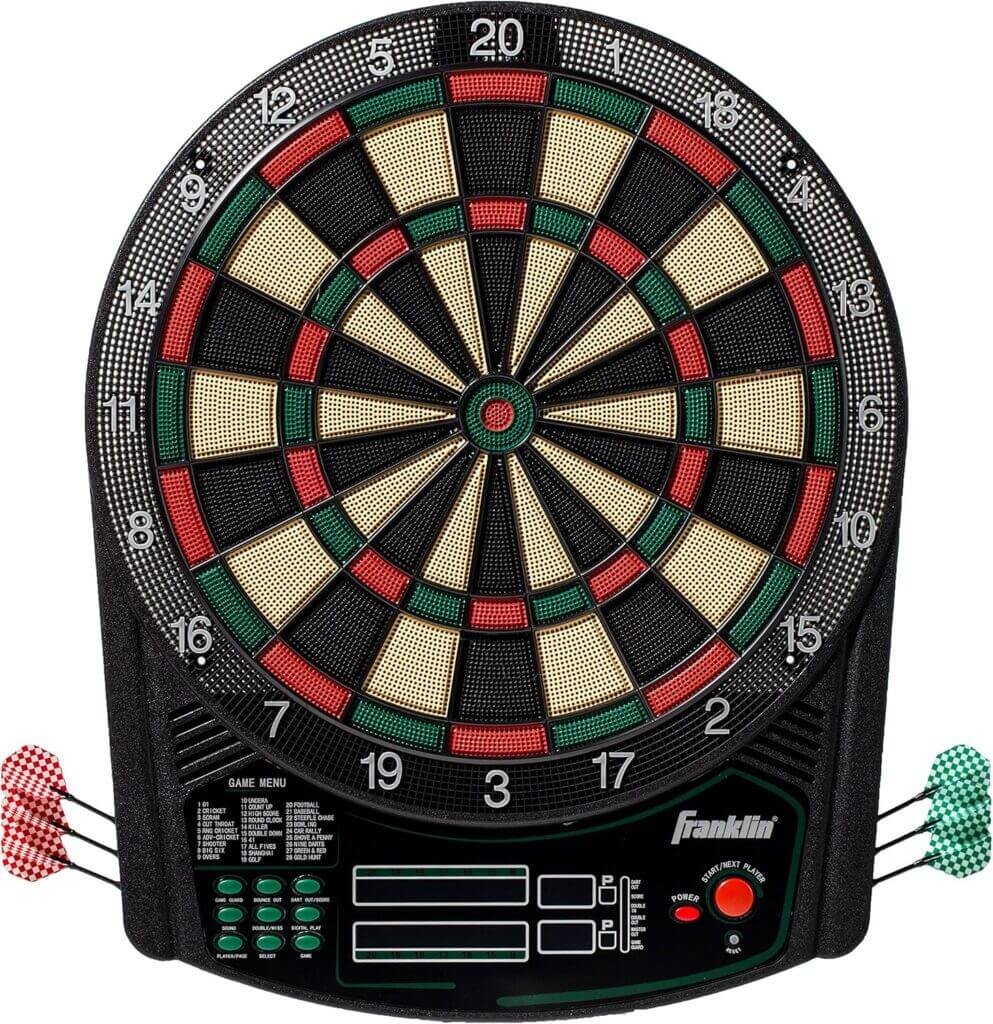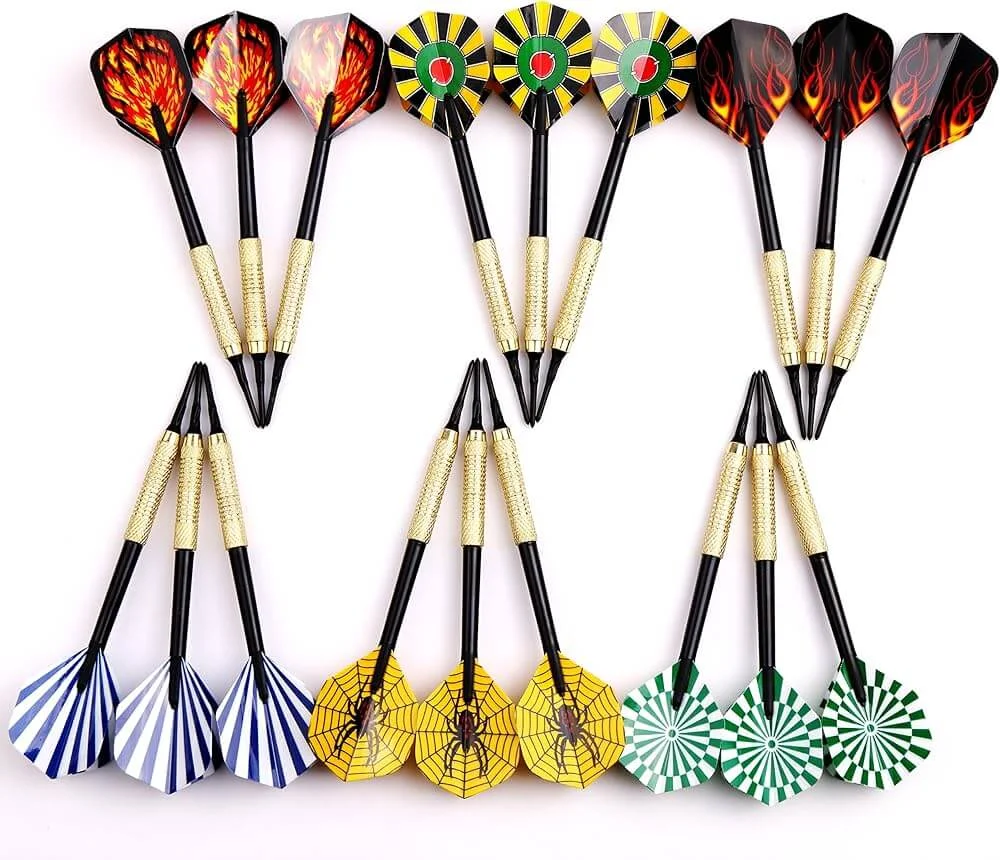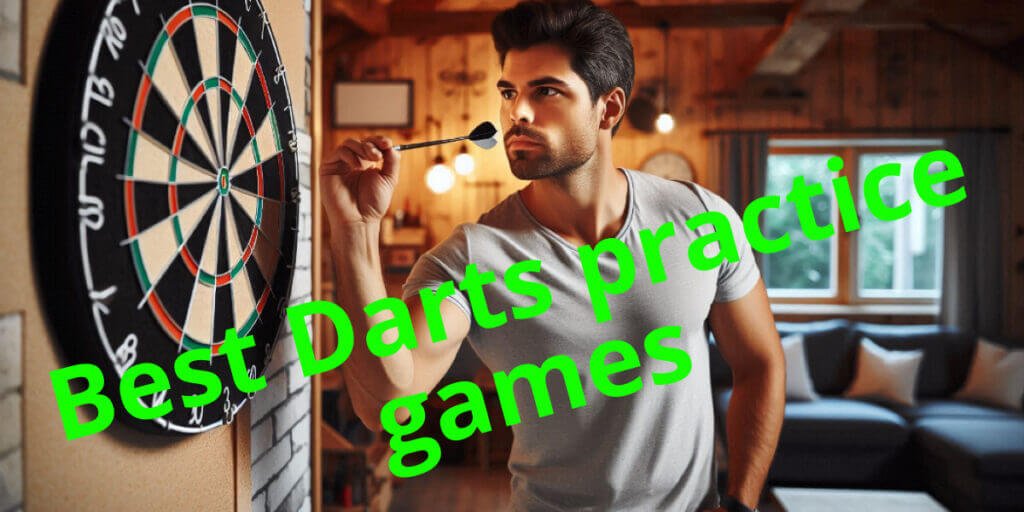Darts is a thrilling sport that requires precision, practice, and the right environment to develop your skills. While many players hone their craft at local pubs or clubs, creating a dedicated darts practice setup at home can significantly enhance your training. In this article, we’ll explore the essential elements of building a home darts practice setup, from selecting the right equipment to optimizing your space for performance. Whether you’re a beginner or an experienced player, this guide will help you create the perfect environment for improving your game.
1. Choosing the Right Dartboard
The first step in creating your home darts practice setup is selecting the right dartboard. There are primarily two types of dartboards: bristle boards and electronic boards.
- Bristle Dartboards: These are made from compressed sisal fibers and are the traditional choice for professional players. They are durable, allow for excellent scoring, and are suitable for steel-tipped darts.
- Electronic Dartboards: These boards automatically score your throws and are great for beginners and casual players. They typically use soft-tipped darts and often come with various game modes.

When choosing a dartboard, consider reputable brands like Winmau, Target, and Viper for bristle boards. For electronic boards, consider brands like Arachnid and Bullshooter. Ensure the board meets the standards set by the World Darts Federation (WDF) or the Professional Darts Corporation (PDC) for a professional feel.
2. Finding the Right Space
Ideal Location
Your home darts practice setup should ideally be in a quiet area where you can focus and practice without distractions. Look for a space that provides enough room for throwing darts comfortably, typically around 8 feet by 8 feet, depending on your practice needs.
Wall Protection
To prevent damage to your walls from stray darts, consider using a dartboard surround or a protective backboard. This will help catch any missed shots and protect your walls from damage. You can purchase commercial options or create a DIY version using corkboard or foam padding.
Floor Space
Ensure you have sufficient space on the floor to stand back from the dartboard. The standard throwing distance is 7 feet 9.25 inches (2.37 meters) from the front of the dartboard to the throwing line (oche). Make sure there is ample space for your throwing stance and follow-through.
3. Setting Up the Dartboard
Mounting the Dartboard
Once you have the right space, it’s time to mount your dartboard. Follow these steps for a proper setup:
- Measure the Height: The center of the bullseye should be 5 feet 8 inches (1.73 meters) from the floor.
- Mark the Wall: Use a pencil to mark the wall where the center of the dartboard will be located.
- Install the Board: Use the mounting hardware that comes with the dartboard. Ensure it is securely fastened to the wall to prevent any accidents during play.
- Add a Throwing Line: Mark the throwing line on the floor using tape or paint. Ensure it is 7 feet 9.25 inches from the front of the dartboard.
Lighting
Proper lighting is crucial for a successful darts practice setup. Ensure that your dartboard is well-lit to see the board clearly and minimize shadows. Consider using overhead lighting or wall-mounted fixtures that provide even illumination across the board.
4. Selecting Your Darts
Types of Darts
Choosing the right darts is essential for your practice. Darts typically consist of three main components: the barrel, the shaft, and the flight.
- Barrel: This is the main body of the dart. Darts come in various weights (usually between 18-26 grams), and selecting the right weight depends on your throwing style and preference.
- Shaft: The shaft connects the barrel to the flight. Shafts come in various lengths and materials, impacting the stability of your throw.
- Flight: The flight is the aerodynamic surface at the end of the dart. They come in different shapes, sizes, and thicknesses, which can affect how the dart flies through the air.
Recommended Darts
Consider trying darts from reputable brands like Target, Winmau, or Red Dragon. If you’re unsure about what weight or style to choose, visiting a local darts shop can help you test different options.

5. Incorporating Practice Tools
Scoring Apps and Boards
To track your progress and keep your practice sessions engaging, consider using scoring apps or tools. There are various smartphone apps available that can help you record your scores, set practice routines, and analyze your performance over time.
Practice Games
Incorporating games into your practice can make it more enjoyable and help you work on specific skills. Here are some popular practice games to consider:
- 501/301: A classic scoring game where you start from a set score and aim to reduce it to zero.
- Around the World: Players aim to hit every number on the board in sequence, testing their accuracy.
- Cricket: A popular game that requires players to hit specific numbers to win, encouraging strategic thinking and precision.
Visual Aids
Consider using visual aids, such as a dart training board or a checklist of your practice goals. This can help you stay focused during practice sessions and work on specific areas that need improvement.
6. Establishing a Practice Routine
Consistency is Key
To improve your darts game, consistency in practice is crucial. Set a schedule that allows you to practice regularly, whether it’s a few times a week or daily. Dedicate time to focus on different aspects of your game, such as accuracy, scoring, and mental preparation.
Warm-Up Exercises
Before diving into practice, take a few minutes to warm up. Simple exercises such as stretching your arms and shoulders can help prevent injuries and improve your throwing mechanics. Consider doing a few practice throws to get in the groove before starting focused drills.
Focused Practice Sessions
Break your practice into focused sessions targeting specific skills. For example, dedicate one session to practicing doubles, another to scoring high, and another to working on your consistency. This targeted approach will yield better results and help you identify areas for improvement.
7. Maintaining Your Equipment
Dart Maintenance
To ensure your darts perform at their best, regularly inspect and maintain them. Check for any signs of wear and tear on the flights and shafts, and replace them as needed. Cleaning the barrels can also enhance grip and performance.
Board Care
Take care of your dartboard to prolong its lifespan. Rotate the board periodically to ensure even wear on the sisal fibers. Avoid using damaged darts, as they can cause unnecessary wear on the board.
8. Inviting Friends for Practice
Socializing While Practicing
Darts is often a social game, and inviting friends over for practice can enhance your experience. Not only does it make practice more enjoyable, but it also allows you to challenge each other and share tips. Consider organizing friendly competitions or practice matches to keep things exciting.
Setting Up a Mini Tournament
To spice things up, host a mini-tournament with friends. Create a bracket system and play different formats of the game. This adds a competitive edge to your practice sessions and allows you to apply what you’ve learned in a match setting.
Conclusion
Building a home darts practice setup is a rewarding endeavor that can significantly enhance your skills and enjoyment of the game. By choosing the right equipment, optimizing your space, and establishing a consistent practice routine, you’ll be well on your way to improving your darts game. Remember that practice is essential, and creating an environment that fosters growth and enjoyment will keep you motivated. Whether you’re a casual player or aspiring champion, your home darts setup will become a crucial part of your journey to success in this exciting sport.





